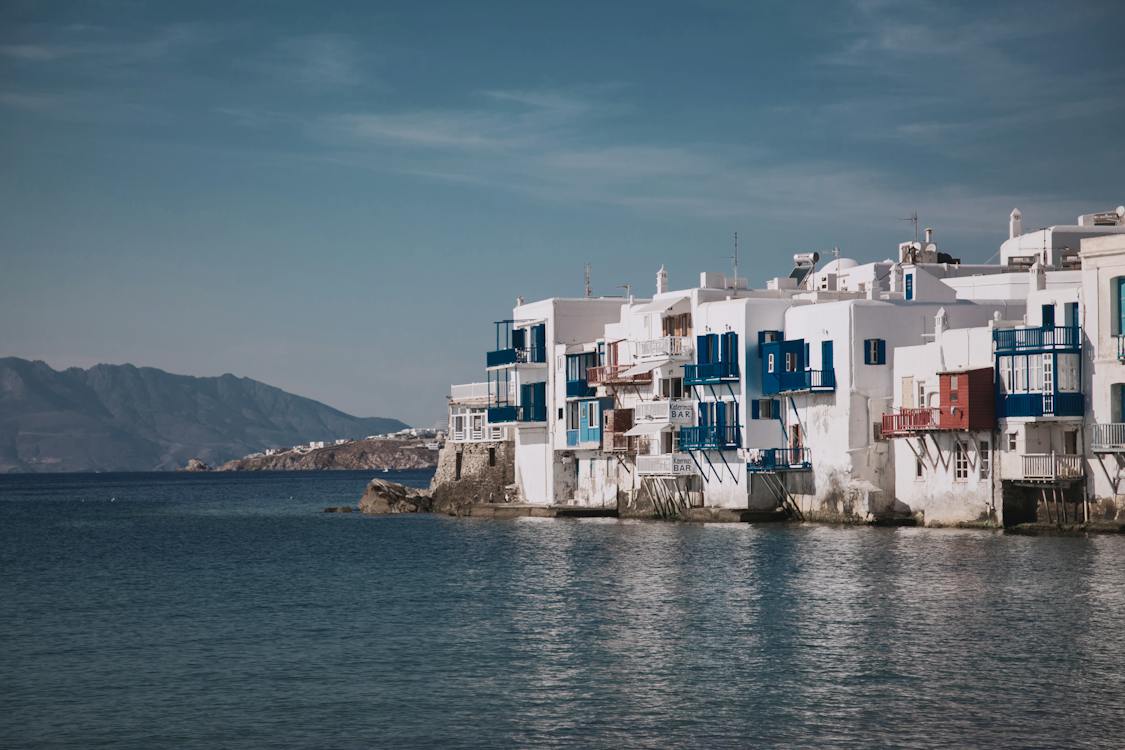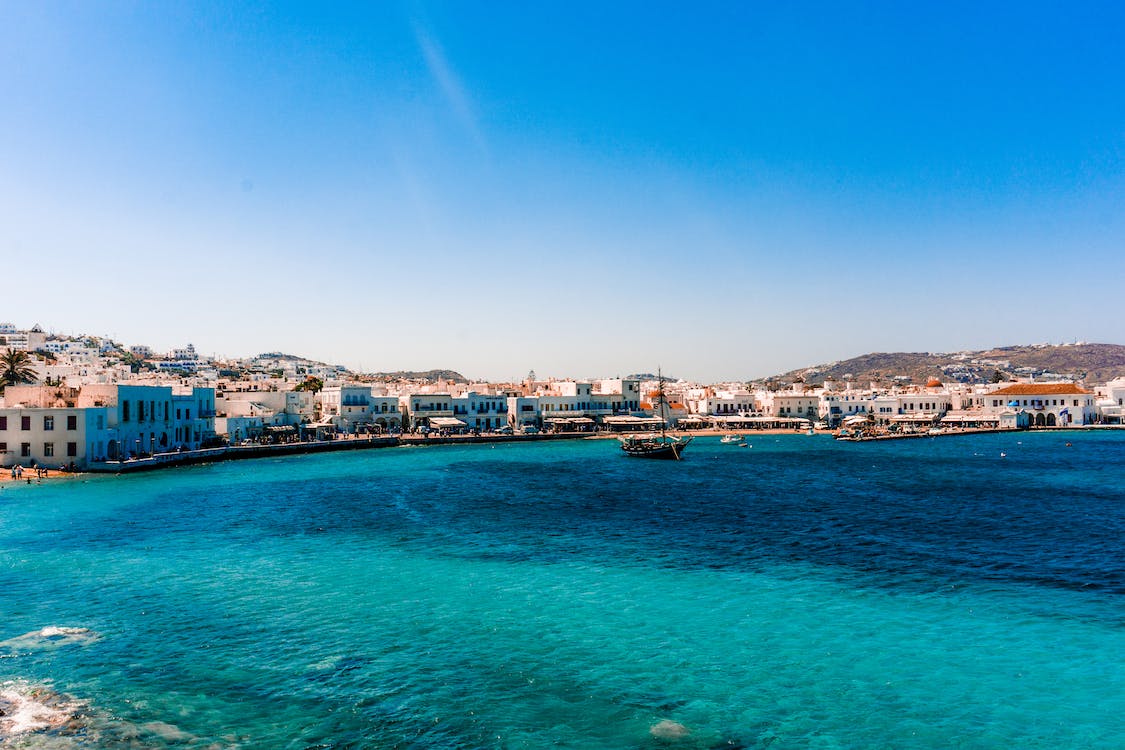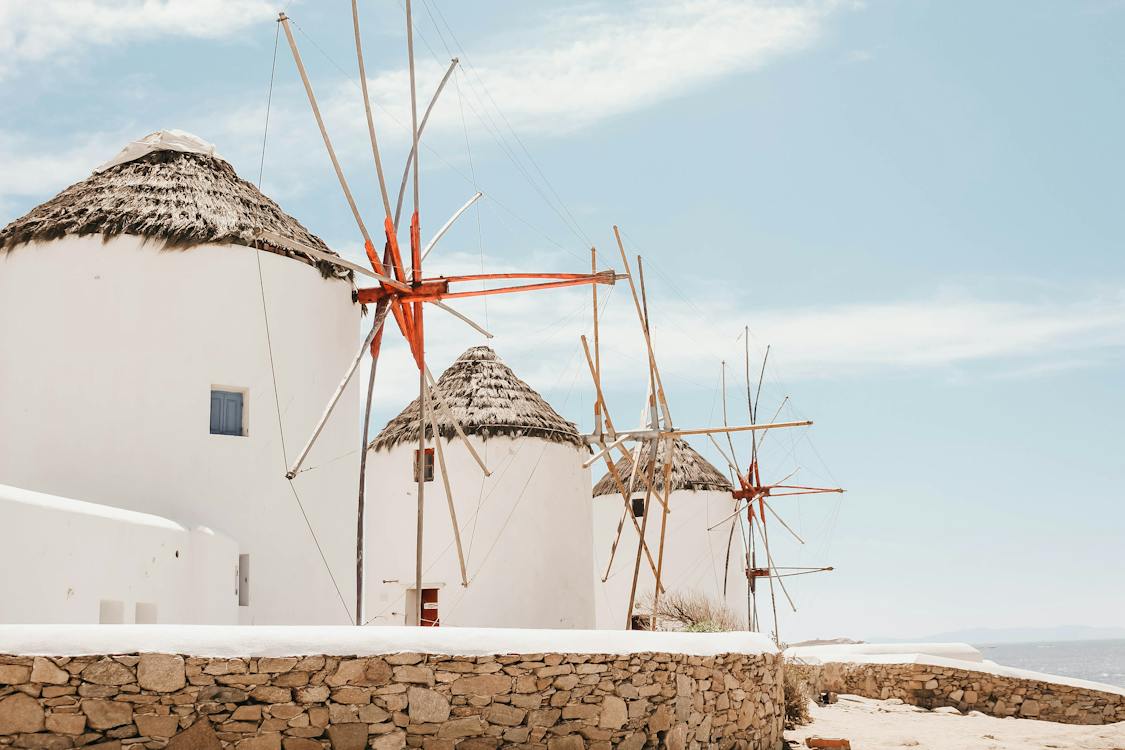Nestled in the heart of the Aegean Sea, the island of Mykonos is a jewel of Greece, known for its vibrant nightlife, stunning beaches, and whitewashed architecture. But beyond its modern allure as a tourist hotspot, Mykonos harbors a rich tapestry of history stretching back thousands of years. From its mythical beginnings, said to have been formed from the petrified bodies of giants slain by Hercules to its role in ancient maritime trade, Mykonos has played a pivotal role in the tapestry of Greek history.
Throughout the centuries, it has seen the passage of Romans, Byzantines, Venetians, and Ottomans, each leaving their mark on the island’s culture and architecture. This article aims to offer a glimpse into the fascinating historical journey of Mykonos, an island that has been a crossroads of civilizations, a haven for artists, and a beloved destination for travelers from around the globe.
Mykonos in Greek Mythology
The island of Mykonos holds a special place in Greek mythology, imbued with tales of gods and heroes that add a layer of mystique to its already captivating landscape. According to legend, Mykonos was named after its first ruler, Mykonos, the son or grandson of the god Apollo and a local hero. This divine lineage reflects the island’s perceived importance in the ancient world, a place where the mundane meets the mythological.
Central to Mykonos’ mythological history is its connection to the epic battle between Zeus and the Titans. The island is said to have emerged from the aftermath of this cosmic struggle, formed from the petrified bodies of giants defeated by Hercules, an ally of Zeus. This dramatic origin story is a testament to the island’s enduring presence, standing as a silent witness to the power and wrath of the gods.
Another mythological figure associated with Mykonos is Daedalus, the famed architect and inventor, who found refuge on the island after escaping from King Minos of Crete. His presence on Mykonos underscores the island’s role as a sanctuary for those seeking solace or escape, a theme that resonates throughout its history.
The island’s sacred ties extend to the nearby island of Delos, considered one of the most important historical and archaeological sites in Greece. According to myth, Delos is the birthplace of Apollo and Artemis, making Mykonos part of a sacred landscape revered by the ancient Greeks.
Mykonos in Ancient Greece
In Ancient Greece, Mykonos found itself at the crossroads of important maritime routes, serving as a vital link in the chain of trade and cultural exchange that flourished in the Aegean Sea. The island’s proximity to Delos, a major religious center dedicated to Apollo, meant that Mykonos benefitted from the traffic of pilgrims and traders alike, contributing to its development and prosperity.
During this era, Mykonos was known for its agricultural production and fine pottery, which were traded along the vast networks that connected the Aegean islands with the wider Mediterranean world. The island’s strategic location made it a stepping stone for ships navigating the unpredictable waters of the Aegean, offering a safe harbor to sailors and merchants.
Archaeological evidence from this period points to a society that was deeply integrated into the larger Greek world. Excavations have uncovered remnants of settlements, pottery, and other artifacts that attest to the island’s participation in the cultural and economic life of ancient Greece. Despite its modest size, Mykonos carved out a niche for itself, contributing to the tapestry of city-states and islands that constituted the ancient Greek civilization.
Mykonos in Various Eras
Following the era of Ancient Greece, the island of Mykonos embarked on a journey through time that saw it under the influence of various powers, reflecting the broader shifts in control and culture that swept through the Aegean Sea and the wider Mediterranean region.
Byzantine Era: With the division of the Roman Empire, Mykonos fell under Byzantine rule, becoming part of this vast empire that lasted until the 12th century. During this period, the island served as a lookout point against pirate raids, a constant threat due to its strategic location. The Byzantine influence is evident in the remnants of ecclesiastical architecture and religious art found on the island.
Venetian Rule: In the aftermath of the Fourth Crusade and the fragmentation of the Byzantine Empire, Mykonos came under the control of the Republic of Venice from the 13th century until the 16th century. The Venetian legacy on the island includes the introduction of Catholicism alongside the Orthodox Christian majority, a duality that added to the cultural tapestry of Mykonos.
Ottoman Era: The 16th century saw Mykonos becoming part of the Ottoman Empire, a transition that ushered in a period of relative autonomy for the island. The Ottomans allowed local self-governance, which enabled Mykonos to flourish as a trading and maritime center despite the ongoing threat of piracy that characterized the Aegean Sea during this time.
Modern History: The Greek War of Independence in the early 19th century marked the beginning of a new chapter for Mykonos as it became part of the newly established Greek state. The island experienced economic fluctuations over the following decades, with significant emigration and changes in its social and economic structure.
In the 20th century, Mykonos transformed from a relatively obscure island into one of the world’s most famous tourist destinations. The 1950s and 1960s brought celebrities, artists, and writers to its shores, drawn by its natural beauty and traditional way of life. This influx marked the beginning of the island’s modern era as a global tourism hotspot, celebrated for its beaches, vibrant nightlife, and distinctive Cycladic architecture.
Through these successive periods, Mykonos has retained its unique identity while adapting to the changes and challenges brought by each new era. Its rich history after Ancient Greece is a reflection of the resilience and adaptability of its people, who have navigated the complexities of shifting political landscapes to preserve the island’s heritage and welcome the future.
Conclusion
In summing up the storied past of Mykonos, it’s clear that this enchanting island has navigated a remarkable journey through time. From its mythical origins and strategic role in ancient maritime routes to its evolution under Byzantine, Venetian, and Ottoman rule, Mykonos has been a witness to and a participant in the ebb and flow of civilizations.
The island’s transformation in the 20th century into a beacon for artists, celebrities, and travelers from around the globe marks yet another chapter in its rich history, blending its ancient heritage with a modern allure that captivates visitors to this day.


